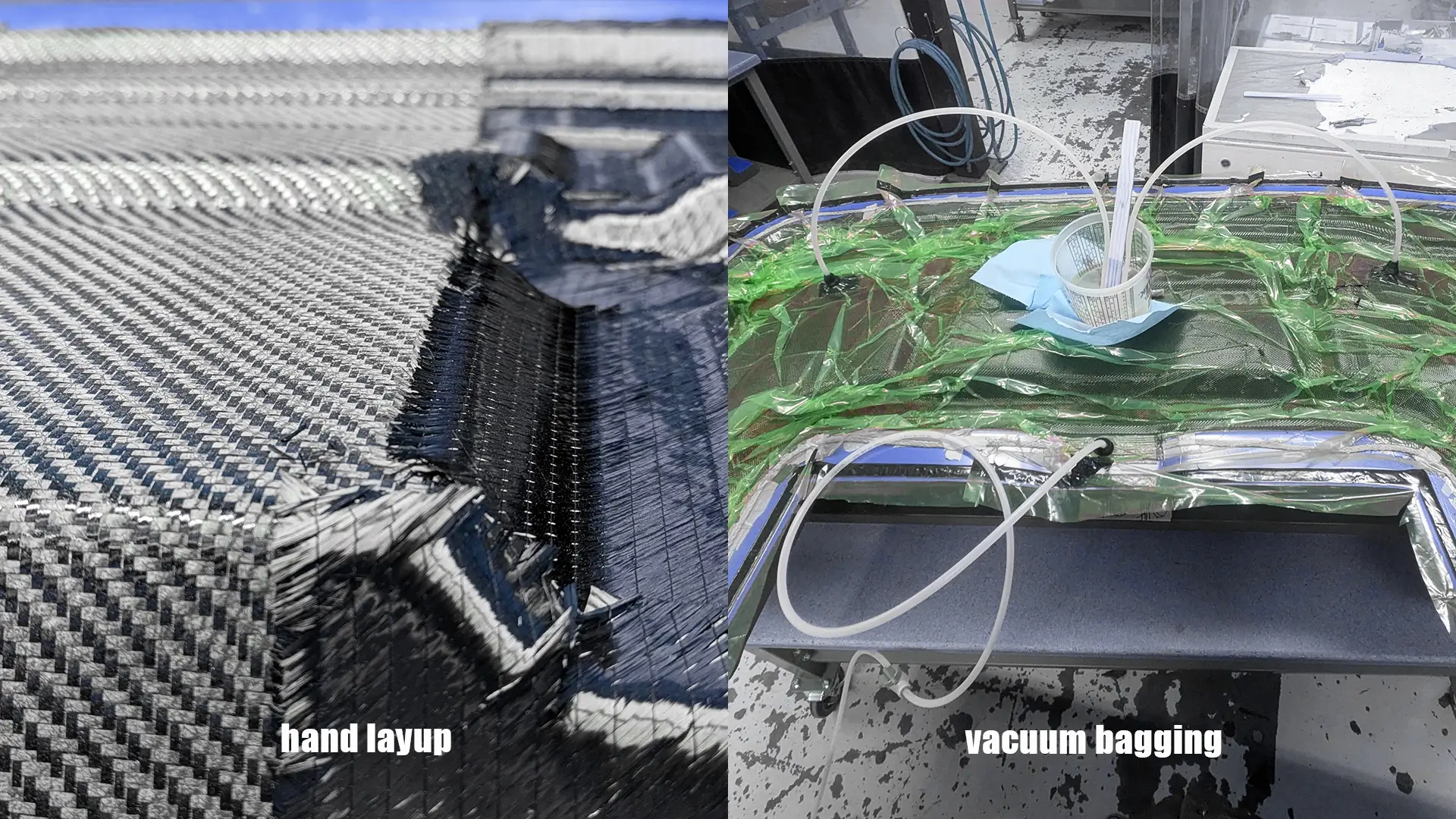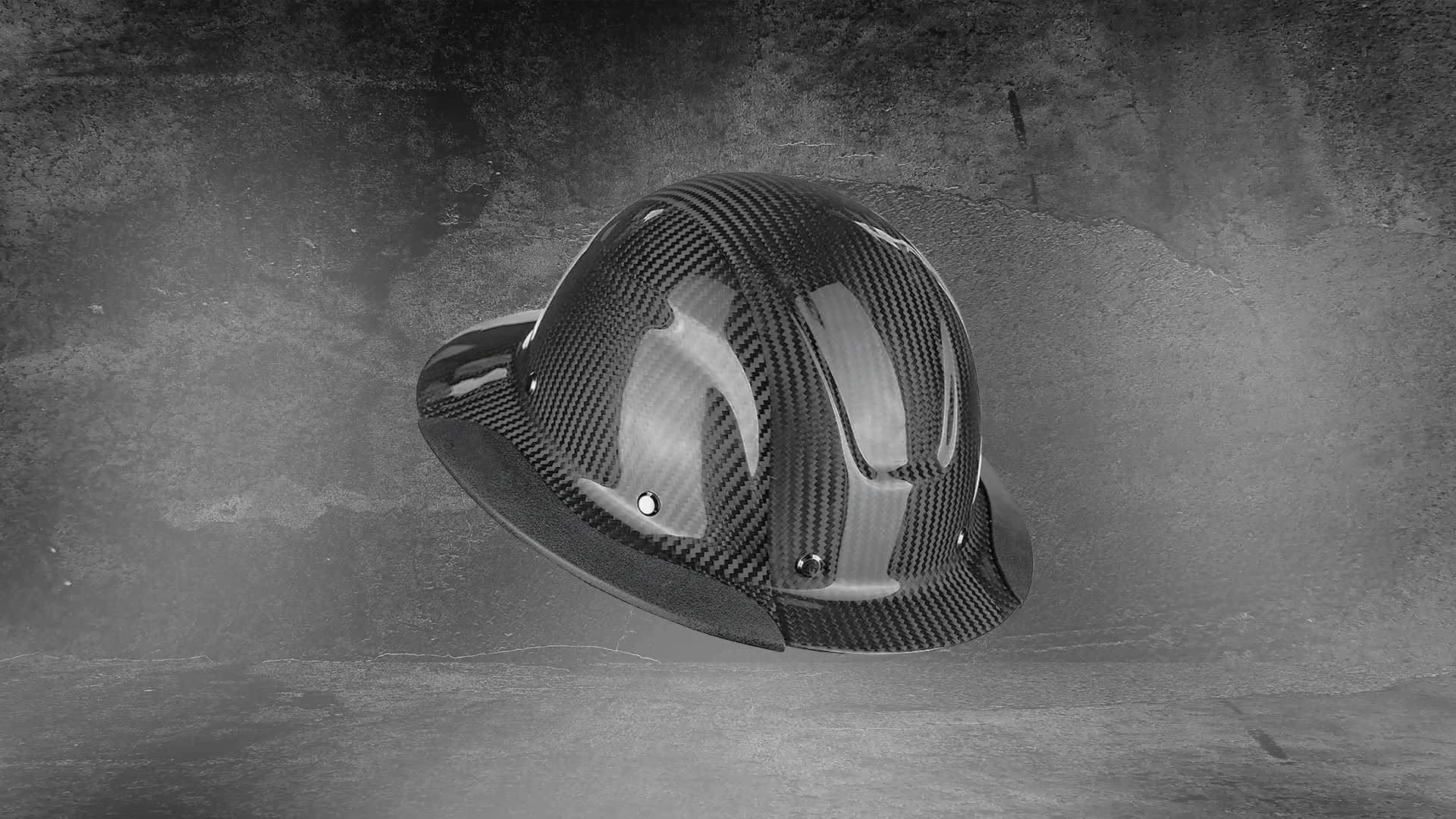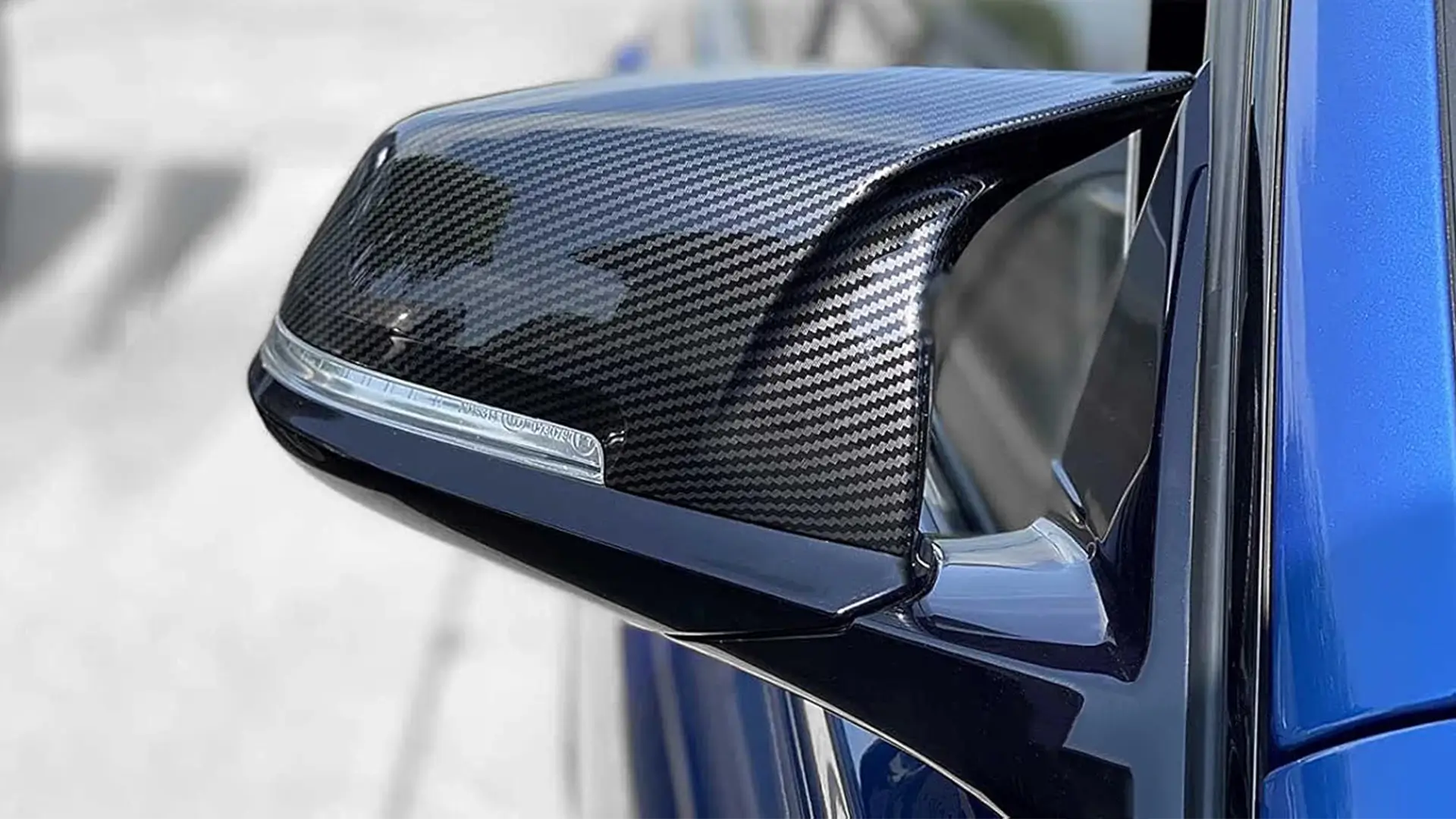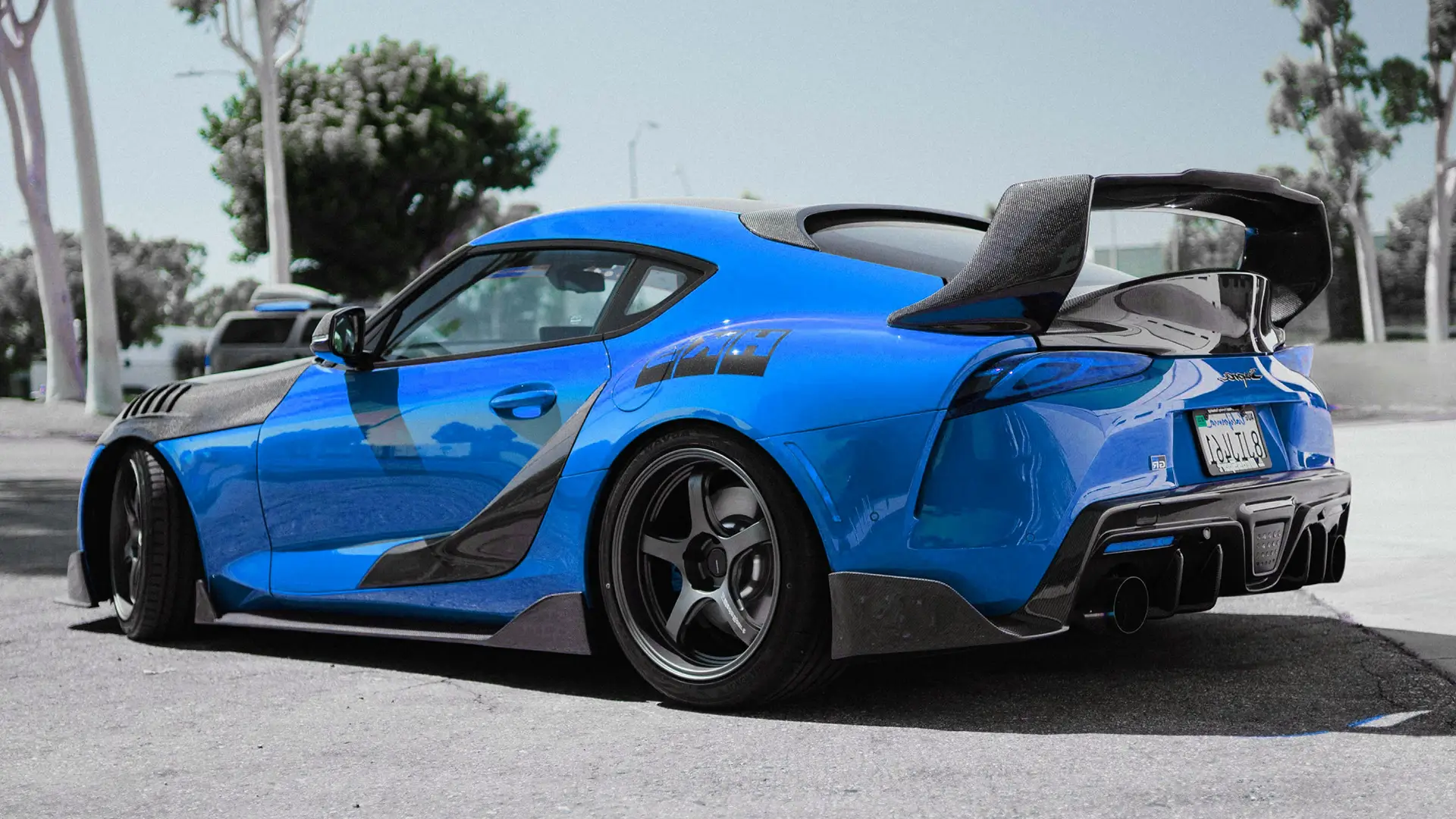This guide explores three key manufacturing methods for carbon fiber hard hats: Autoclave Processing for high-end quality, Resin Transfer Molding (RTM) for mid-range efficiency, and Hand Layup with Vacuum Bagging for cost-effective solutions. By understanding these processes, you can select the method that aligns with your brand’s goals, ensuring your hard hat carbon fiber meets safety standards and customer expectations.
High-End Manufacturing: Autoclave Processing for Premium Carbon Fiber Hard Hats
For brands aiming to produce top-tier carbon fiber hard hats, Autoclave Processing is the industry benchmark. This method delivers unmatched quality, strength, and aesthetics, making it ideal for high-end applications where performance and appearance are critical.
How Autoclave Processing Works
Autoclave processing involves curing pre-impregnated (prepreg) carbon fiber under high pressure and temperature. The process includes:
- Material Preparation: Prepreg carbon fiber, pre-soaked with epoxy resin, is cut to fit the hard hat mold, ensuring precise fiber-to-resin ratios for consistent strength. Selecting prepreg over dry fabric enhances quality.
- Mold Layup: Layers of prepreg are carefully arranged in a precision mold, with fiber orientations optimized for strength and stiffness.
- Vacuum Bagging: The mold is sealed in a vacuum bag to remove air and compact the layers.
- Autoclave Curing: The mold is placed in an autoclave, where high pressure (up to 100 psi) and temperature (up to 350°F) eliminate voids and enhance fiber-resin bonding, creating a flawless finish.
- Finishing: The hard hat is demolded, trimmed, and polished, with optional coatings to enhance its premium appearance.
Advantages of Autoclave Processing
| Feature | Benefit |
|---|---|
| Exceptional Strength | Superior tensile strength and impact resistance for maximum safety. |
| Premium Surface Finish | Glossy, flawless appearance ideal for high-end branding. |
| Consistent Quality | Uniformity across production batches. |
| Customization Options | Supports intricate designs and tailored fiber orientations. |
Limitations
- High Cost: Expensive equipment and skilled labor increase production costs.
- Longer Production Time: Time-intensive, best for low to medium volumes.
- Complex Setup: Requires advanced molds and autoclave facilities.
When to Choose Autoclave Processing
Autoclave processing is ideal for brands targeting premium markets, such as aerospace, oil and gas, or high-end construction, where customers demand top-quality hard hat carbon fiber products. The superior strength and flawless finish justify the higher cost, appealing to buyers prioritizing performance and aesthetics.

Mid-Range Manufacturing: Resin Transfer Molding (RTM) for Balanced Quality and Cost
For brands seeking a balance between quality and affordability, Resin Transfer Molding (RTM) is a versatile method for producing carbon fiber hard hats. This process is well-suited for mid-range products that deliver reliable performance at a competitive price.
How RTM Works
RTM involves injecting resin into a mold containing dry carbon fiber, streamlining production for medium volumes. The steps are:
- Mold Preparation: A two-part mold, typically metal or composite, is coated with a release agent.
- Fiber Placement: Dry carbon fiber fabric is laid into the mold, offering cost savings over prepreg. Choosing dry prepreg or wet layup impacts cost and quality.
- Resin Injection: Low-viscosity resin is injected under pressure, ensuring even saturation and minimizing voids.
- Curing: The mold is heated at moderate temperatures to cure the resin, reducing energy costs.
- Finishing: The hard hat is demolded, trimmed, and finished with coatings or paint for enhanced durability and appearance.
Advantages of RTM
| Feature | Benefit |
|---|---|
| Cost-Effective | Lower material and equipment costs than autoclave processing. |
| Good Quality | Produces strong, lightweight hard hats with a smooth finish. |
| Scalability | Suitable for medium to high production volumes. |
| Design Flexibility | Supports complex shapes and consistent quality. |
Limitations
- Moderate Finish: Surface quality is good but may not match the gloss of autoclave parts.
- Tooling Costs: Matched molds can be expensive for low-volume production.
- Skill Requirement: Requires trained operators for resin injection and mold setup.
When to Choose RTM
RTM is perfect for brands targeting mid-range markets, such as construction firms or industrial suppliers, where customers seek reliable hard hats carbon fiber at a reasonable price. Its scalability makes it ideal for growing brands anticipating higher production volumes.

Low-End Manufacturing: Hand Layup with Vacuum Bagging for Cost-Effective Solutions
For brands prioritizing affordability or niche applications, Hand Layup with Vacuum Bagging offers a cost-effective approach to producing carbon fiber hard hats. This method is suitable for small-scale production, prototyping, or modifying existing hard hats.
How Hand Layup with Vacuum Bagging Works
This manual process involves applying carbon fiber and resin by hand, followed by vacuum bagging for compaction. The steps include:
- Mold Preparation: A simple mold is coated with a release agent.
- Fiber and Resin Application: Dry carbon fiber fabric is laid onto the mold, and resin is applied manually using a brush, roller, or spray gun. For modifications, carbon fiber may be added to an existing hard hat shell.
- Vacuum Bagging: The layup is sealed in a vacuum bag, and a vacuum pump removes air to compact the layers and reduce voids.
- Curing: The part cures at room temperature or with mild heat, depending on the resin system.
- Finishing: The hard hat is demolded, trimmed, and coated with basic finishes to enhance durability.
Advantages of Hand Layup with Vacuum Bagging
| Feature | Benefit |
|---|---|
| Low Cost | Minimal equipment and tooling reduce investment. |
| Flexibility | Ideal for custom designs, prototypes, or modifications. |
| Accessibility | Suitable for small businesses with limited resources. |
| Quick Setup | Fast implementation for low-volume production. |
Limitations
- Variable Quality: Manual application can lead to inconsistencies in fiber alignment and resin distribution.
- Lower Strength: Less precise than autoclave or RTM, resulting in reduced durability.
- Labor-Intensive: Unsuitable for high-volume production.
- Basic Finish: Surface quality may require additional finishing for a polished look.
When to Choose Hand Layup with Vacuum Bagging
This method suits brands targeting budget-conscious customers or producing custom hard hat carbon fiber products for niche markets, such as limited-edition designs or modified hard hats. It’s ideal for startups or small businesses with limited budgets.

Comparing Manufacturing Methods for Carbon Fiber Hard Hats
To help you select the best process for your carbon fiber hard hats, the following table compares the three methods:
| Method | Quality Level | Cost | Production Volume | Strength & Durability | Surface Finish | Best For |
|---|---|---|---|---|---|---|
| Autoclave Processing | High-End | High | Low to Medium | Exceptional | Flawless | Premium brands, high-performance applications |
| Resin Transfer Molding (RTM) | Mid-Range | Moderate | Medium to High | Good | Good | Balanced quality and cost, scalable production |
| Hand Layup with Vacuum Bagging | Low-End | Low | Low | Moderate | Basic | Budget-friendly, prototypes, modifications |
As your brand grows, your manufacturing needs may evolve. Here’s how each method supports scalability:
- Autoclave Processing: Best for low to medium volumes due to its time-intensive nature. Ideal for premium brands with smaller, high-value orders.
- RTM: Highly scalable, making it suitable for brands transitioning to larger production runs while maintaining quality and cost efficiency.
- Hand Layup with Vacuum Bagging: Limited to low volumes due to its labor-intensive process, but flexible for custom or niche orders.
By anticipating future demand, you can select a method that supports your brand’s growth trajectory while meeting current needs.
Key Considerations for Your Brand
- High-End Brands: Autoclave processing delivers the strength and aesthetics needed for premium hard hats carbon fiber, ideal for industries like aerospace or high-end construction.
- Mid-Range Brands: RTM balances quality and cost, perfect for broader markets with scalable production needs.
- Budget or Niche Brands: Hand Layup with Vacuum Bagging is cost-effective for small-scale or custom carbon fiber hard hats, appealing to budget-conscious buyers or unique designs.
Customization Options for Carbon Fiber Hard Hats
You can tailor your carbon fiber hard hats to align with your brand’s vision, regardless of the manufacturing method. Key customization options include:
- Weave Patterns: Selecting plain or twill weaves allows you to balance aesthetic appeal and structural performance.
- Tensile Strength and Modulus: Choosing the appropriate carbon fiber grade ensures the right balance of strength and flexibility.
- Color and Finish: Custom colors and finishes, such as UV-resistant coatings or matte surfaces, enhance visual appeal.
- Tow Size: Selecting the right tow size balances strength and cost for your specific needs.
These options allow you to create hard hat carbon fiber products tailored to your target market, whether premium, mid-range, or budget-focused.
How to Choose the Right Manufacturing Process for Your Brand
Selecting the best manufacturing method for your carbon fiber hard hats depends on several factors:
- Brand Positioning: Are you targeting premium customers who value top-tier quality or budget-conscious buyers seeking affordability?
- Production Volume: Do you need small batches for custom orders or high volumes for mass distribution?
- Budget: What is your capacity for equipment, tooling, and labor costs?
- Performance Requirements: Do your hard hats need to meet specific safety standards or aesthetic expectations?
- Market Demand: Are your customers prioritizing durability, weight, or cost?
By aligning these factors with the strengths of Autoclave Processing, RTM, or Hand Layup with Vacuum Bagging, you can choose a method that supports your brand’s objectives and delivers value to your customers.
Additional Considerations for Optimizing Carbon Fiber Hard Hat Production
To further enhance your carbon fiber hard hats, consider the following factors during the manufacturing process:
- Material Selection: The choice of carbon fiber grade and resin system significantly impacts performance. High-modulus fibers offer greater stiffness, while standard-modulus fibers may suffice for less demanding applications.
- Mold Design: Precision molds are critical for achieving the complex geometry of hard hats, especially in Autoclave Processing and RTM. Investing in high-quality molds ensures consistency and reduces defects.
- Quality Control: Rigorous testing, such as impact resistance and tensile strength assessments, ensures your hard hats carbon fiber meet industry standards like ANSI Type I.
- Sustainability: Opting for eco-friendly resins or recycling excess carbon fiber can appeal to environmentally conscious customers, enhancing your brand’s reputation.
These considerations, combined with the right manufacturing method, allow you to create hard hat carbon fiber products that stand out in the market.
FAQs about Custom Carbon Fiber Hard Hats
- What customization options are available?
You can customize colors, patterns, logos, decals, hydro-dipped designs, and choose between full-brim or cap-style models. - Does customization affect safety certification?
No, as long as the structural integrity isn’t altered. Reputable manufacturers maintain ANSI/OSHA compliance after customization. - Can I order in bulk for my team or company?
Yes, most suppliers offer bulk orders with volume pricing and logo branding for companies or crews. - How long does custom production take?
Lead time typically ranges from 7 to 21 business days depending on complexity and order size. - Is custom carbon fiber more expensive than standard models?
Yes, due to the premium materials and added labor, custom versions are generally more expensive than off-the-shelf hard hats. - Can it include special features like anti-static or UV protection?
Some custom models support additional features such as anti-static lining, UV-resistant coating, or chemical-resistant finishes. - Are custom designs durable and long-lasting?
Yes, quality custom finishes—especially hydro-dipped or painted—are designed to withstand jobsite conditions and resist fading or wear. - What work environments are they best suited for?
Ideal for construction, utilities, oil & gas, industrial inspection, and roles that benefit from both protection and brand identity. - How should I clean and maintain a custom carbon fiber hard hat?
Use mild soap and water. Avoid harsh chemicals or abrasives that could damage the design or compromise the structure.
Final Thoughts
As composite material experts, we are willing to provide you with critical assistance. The correct judgment now avoids cost overruns, delays, and disappointing results later.
Need advice on your custom carbon fiber part? Reach out to our team for expert guidance.




